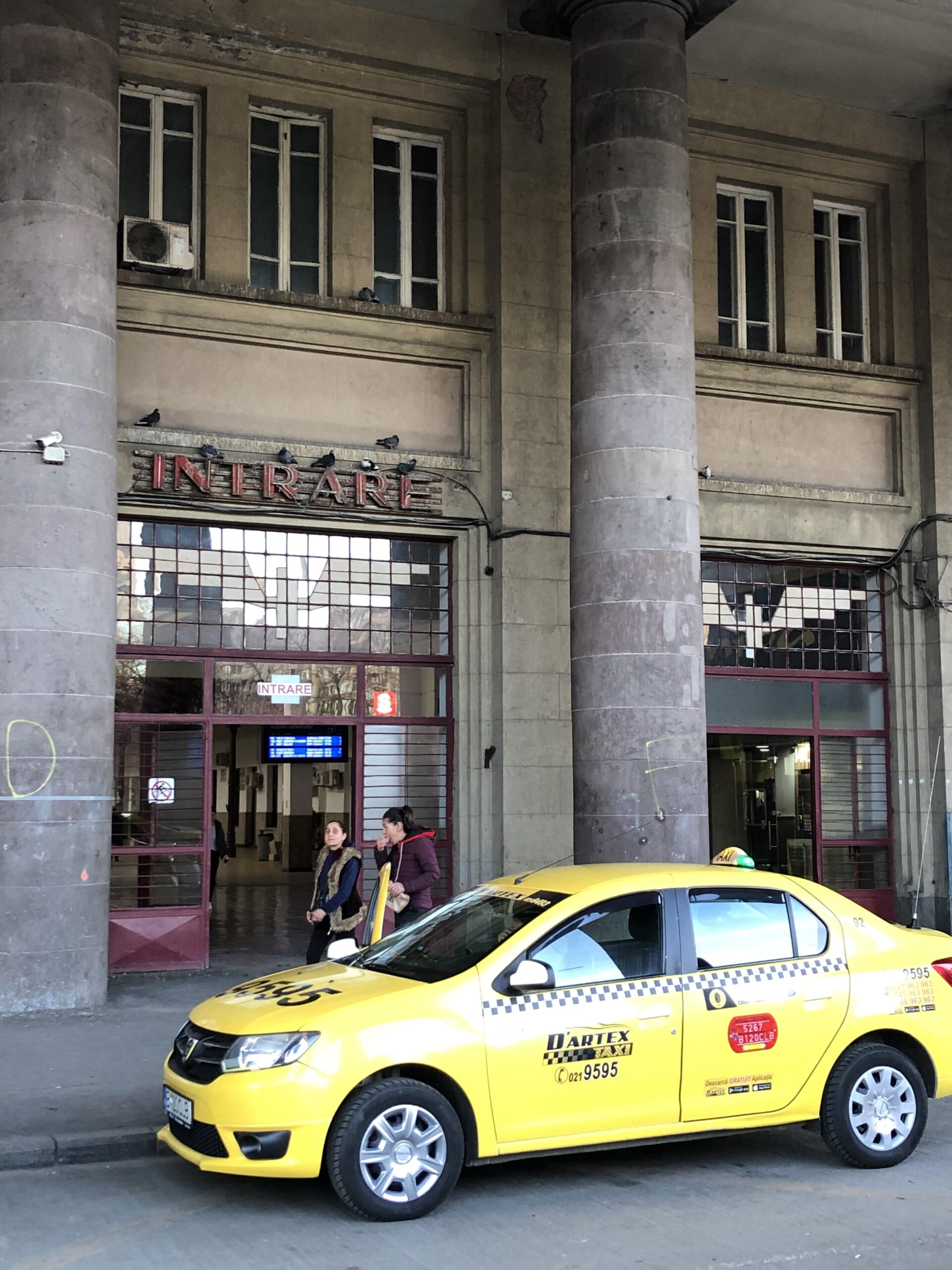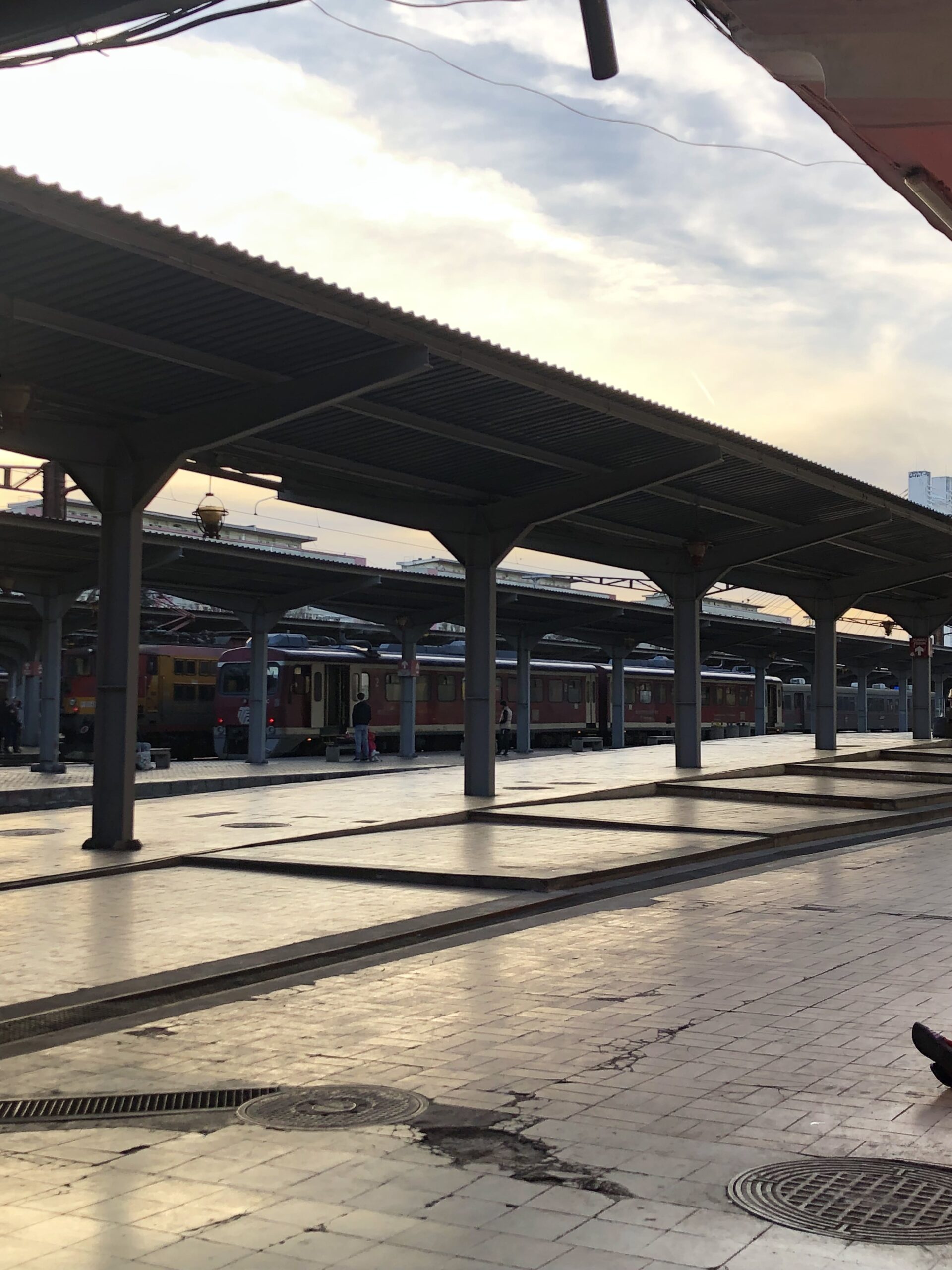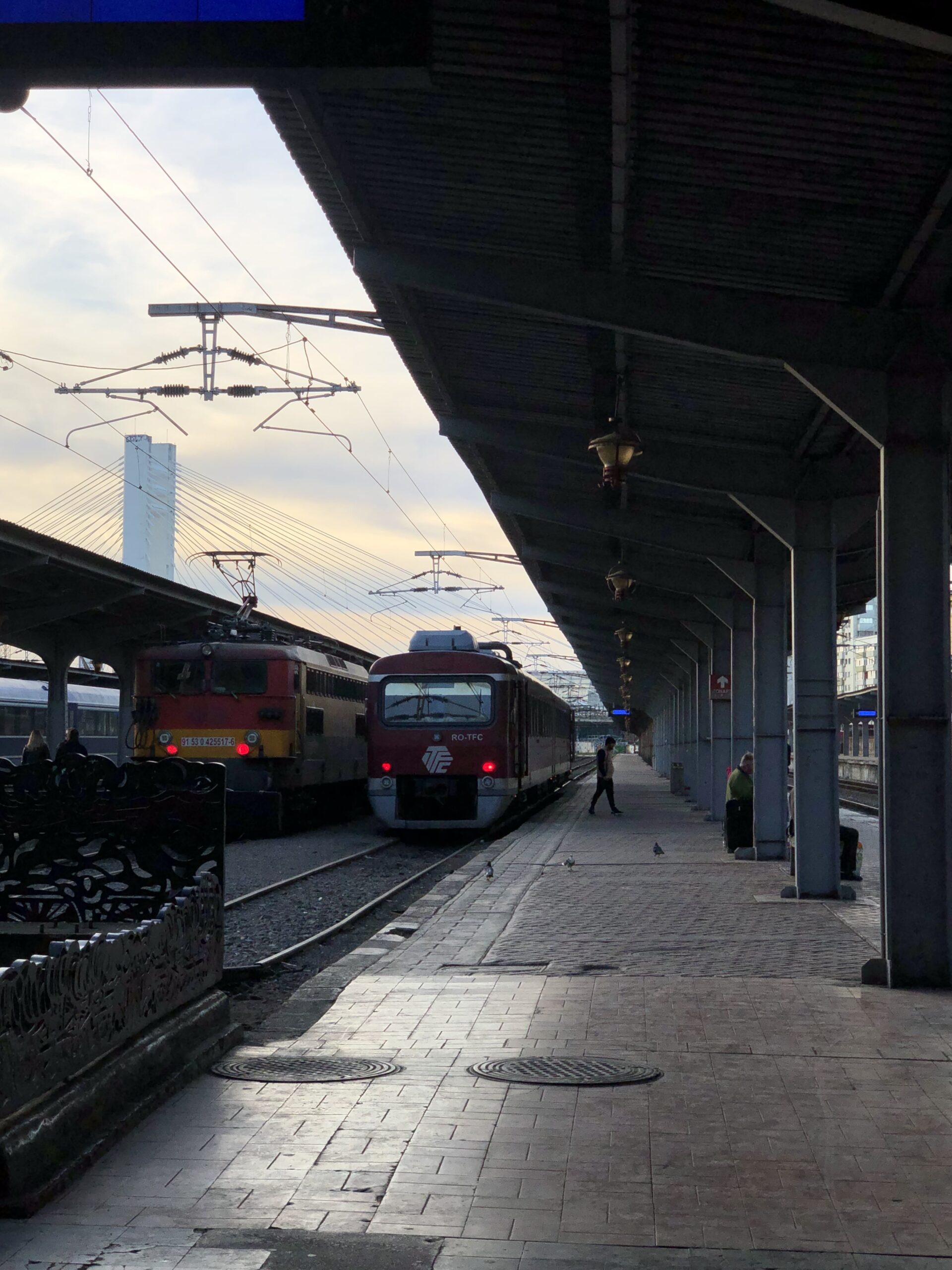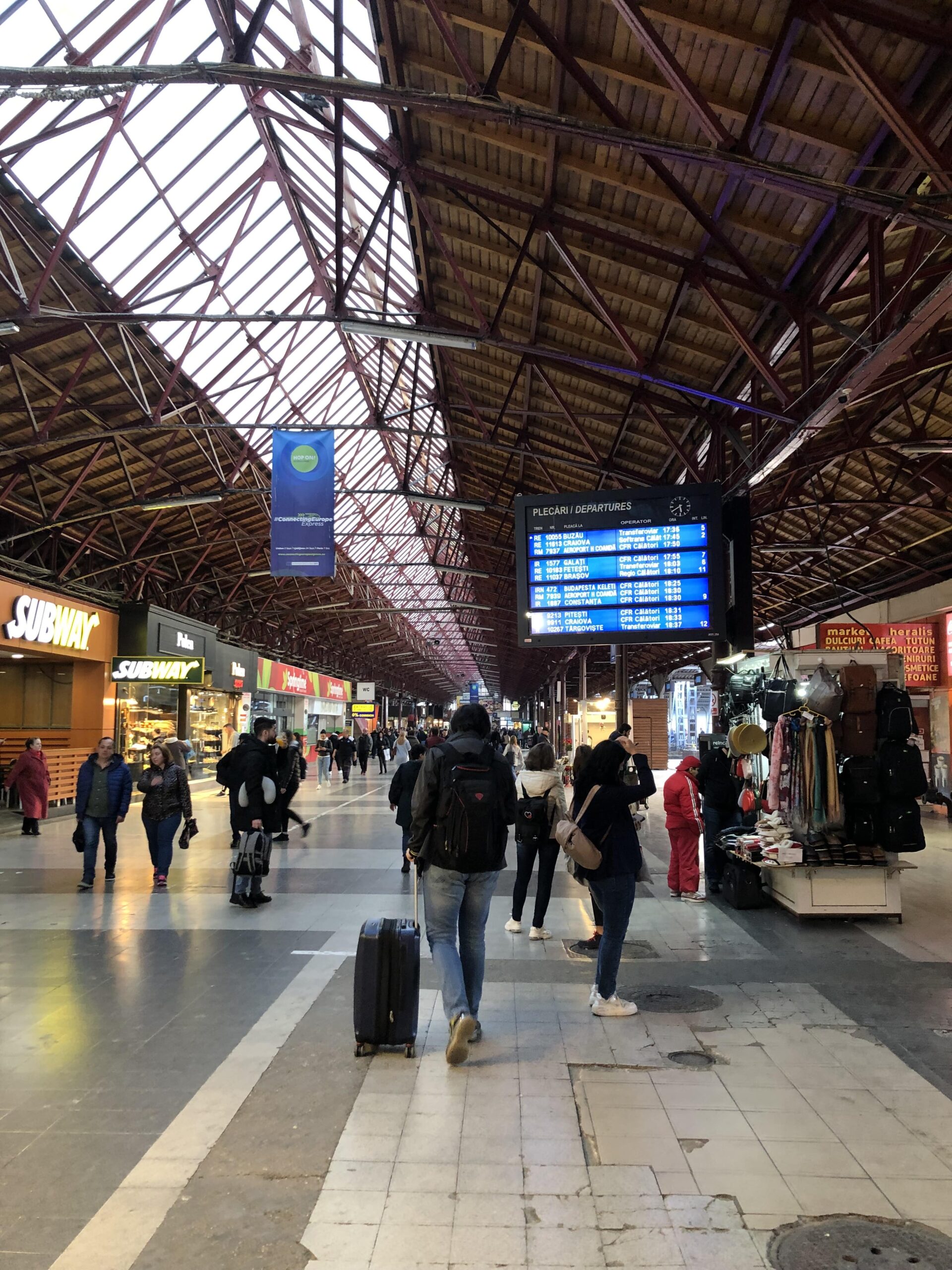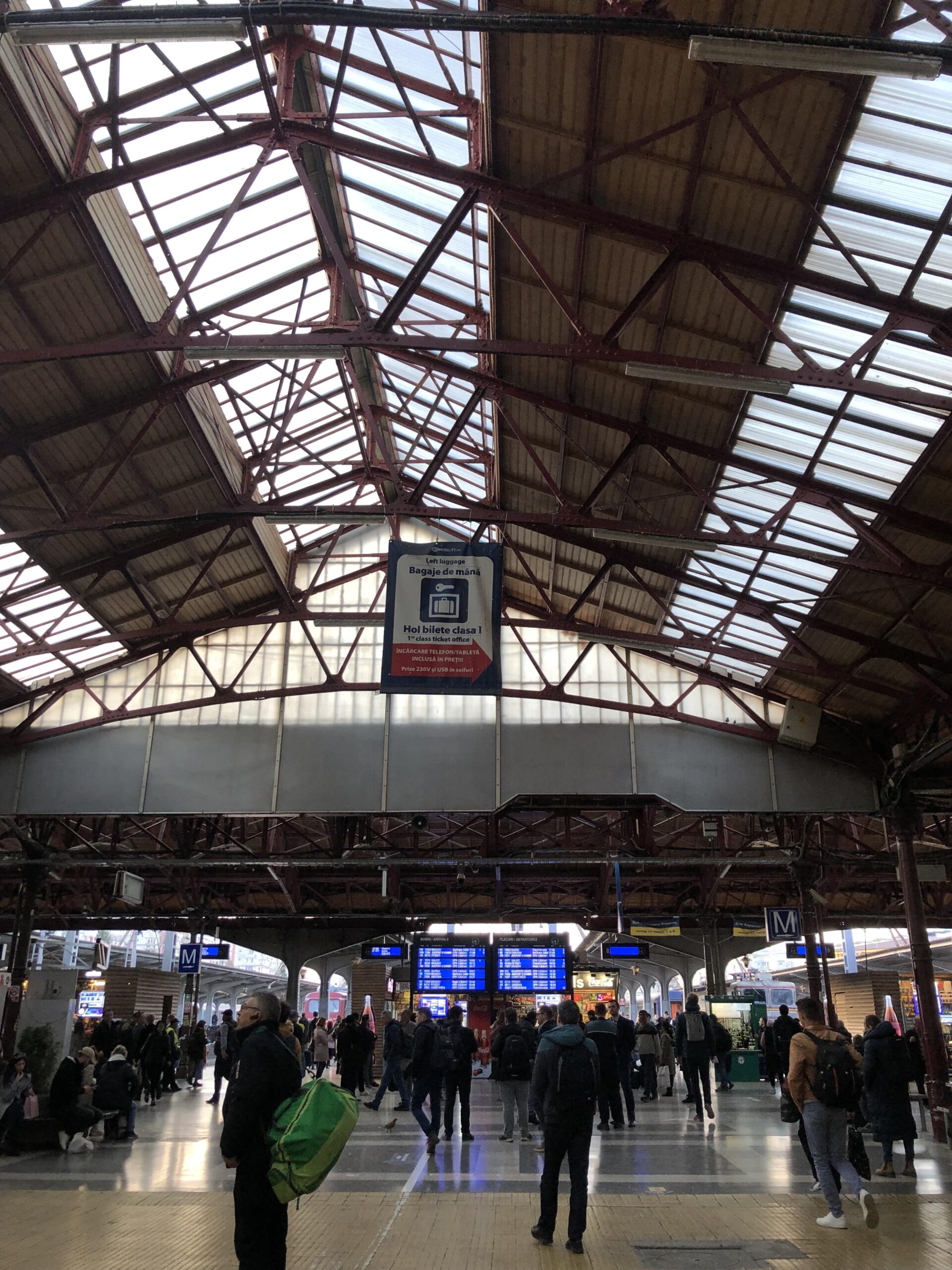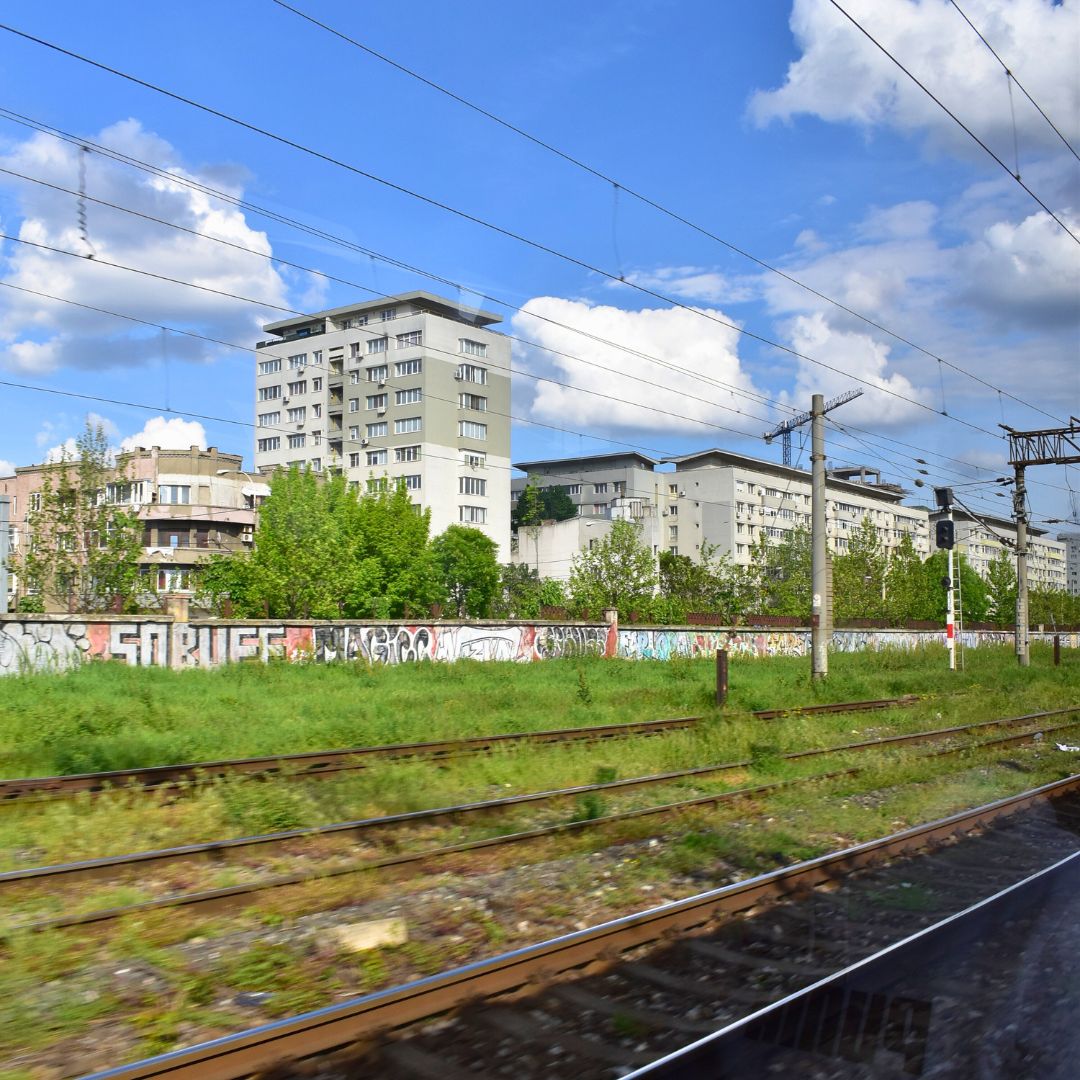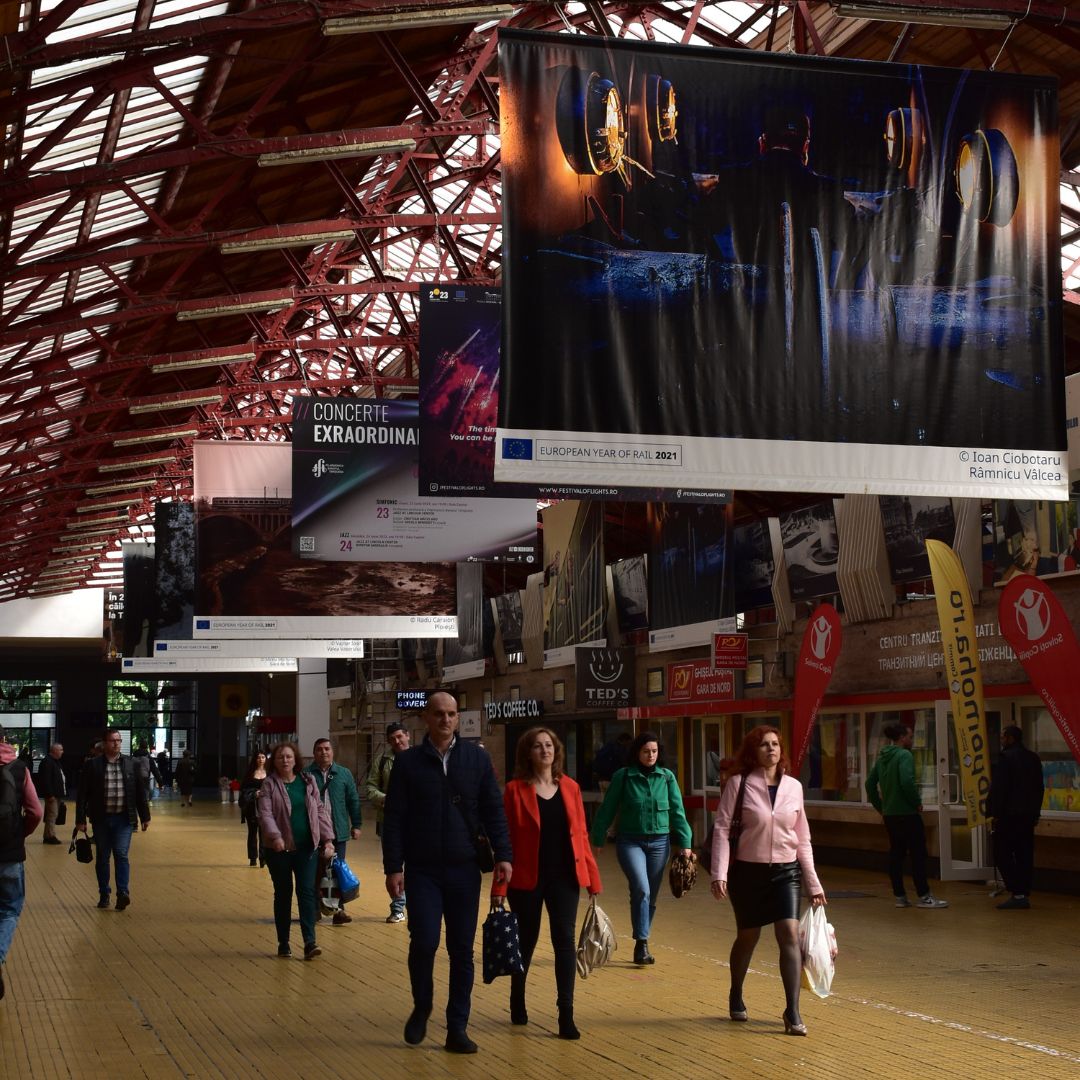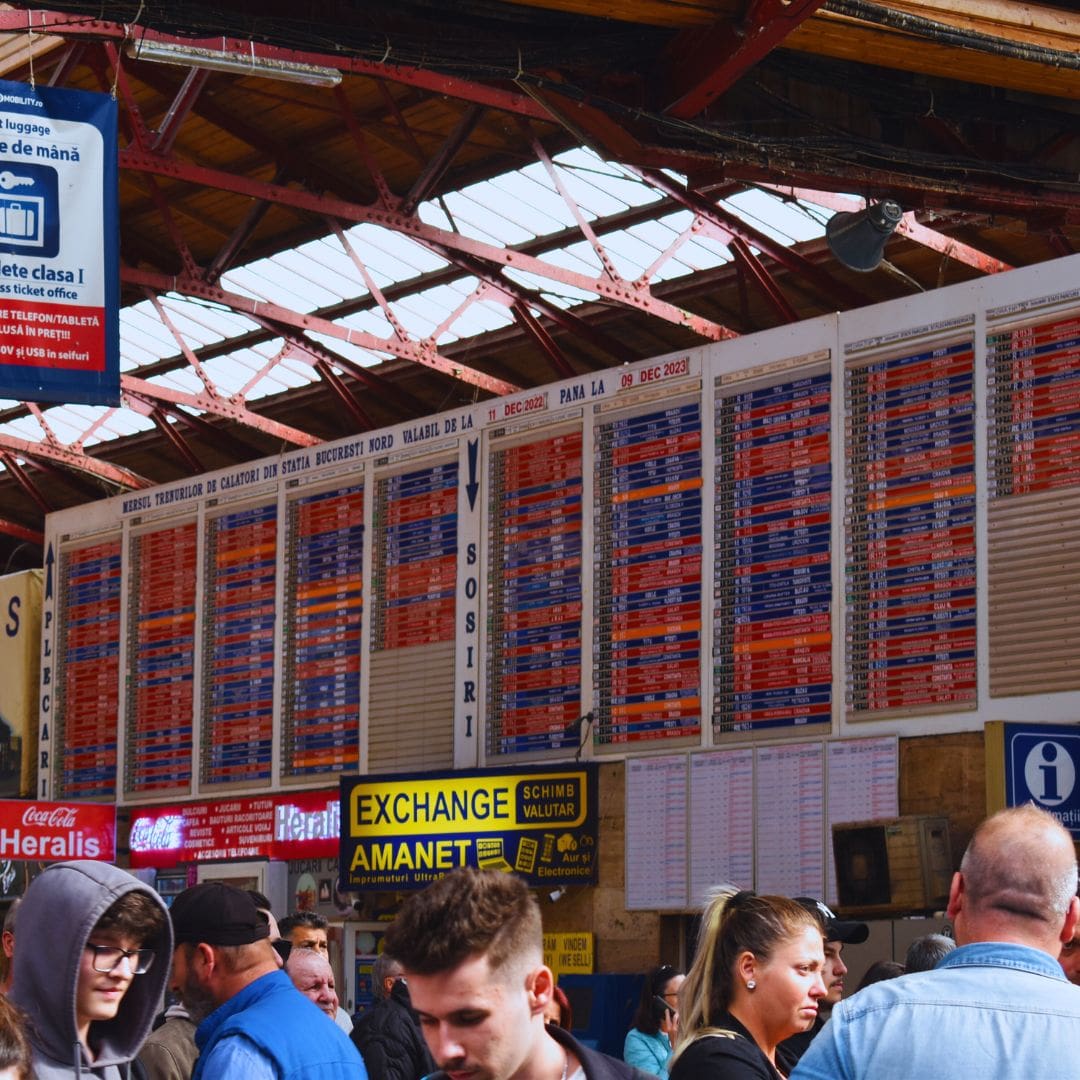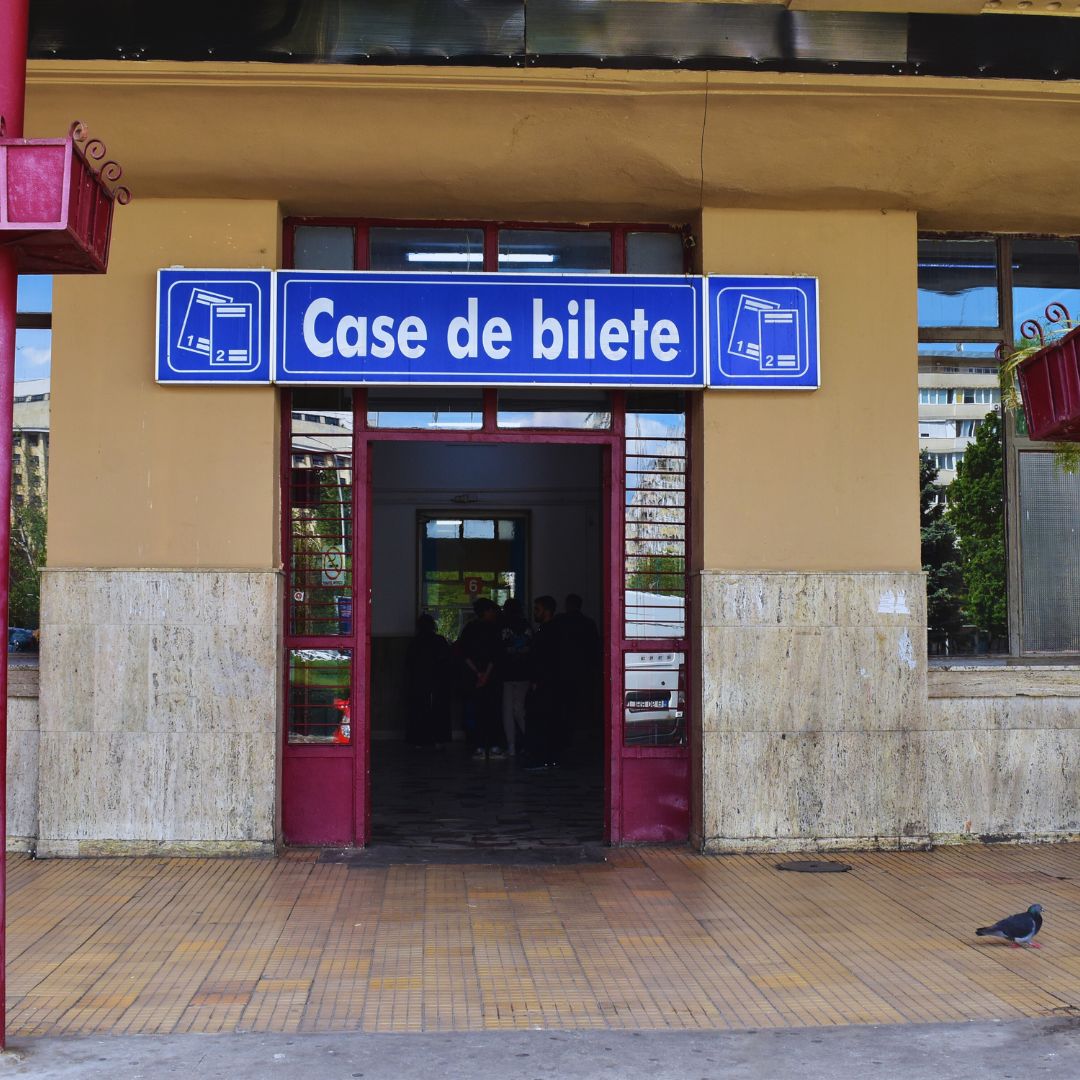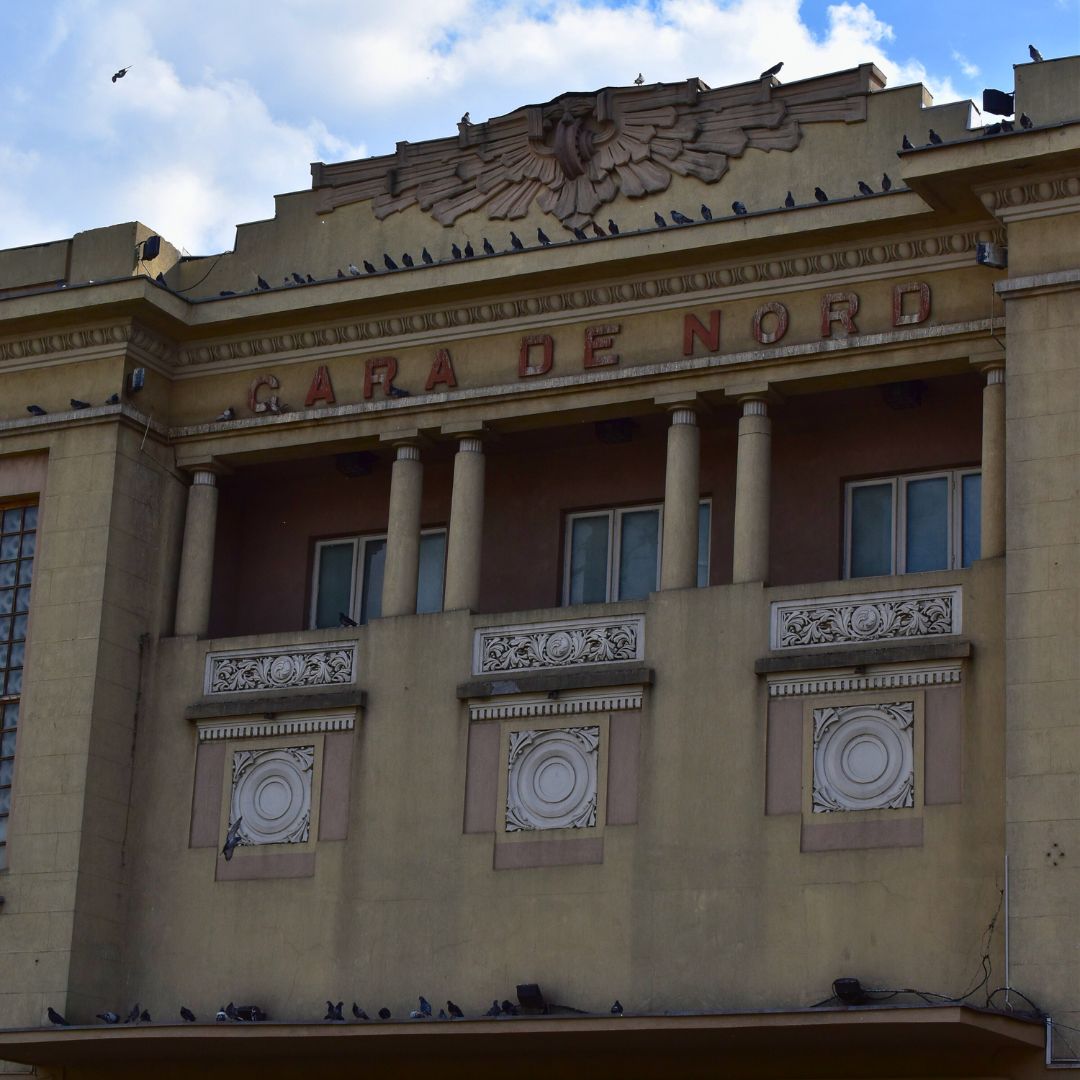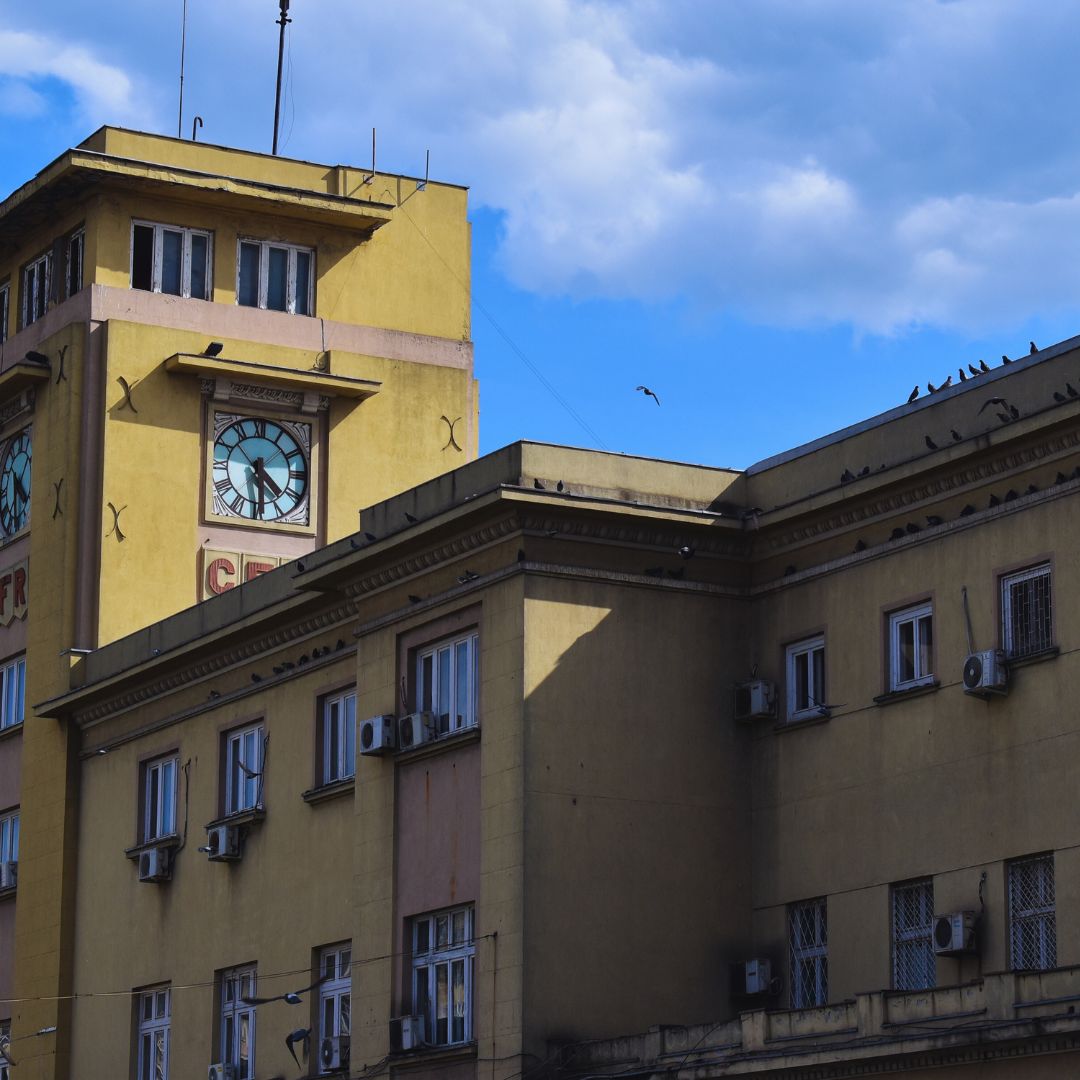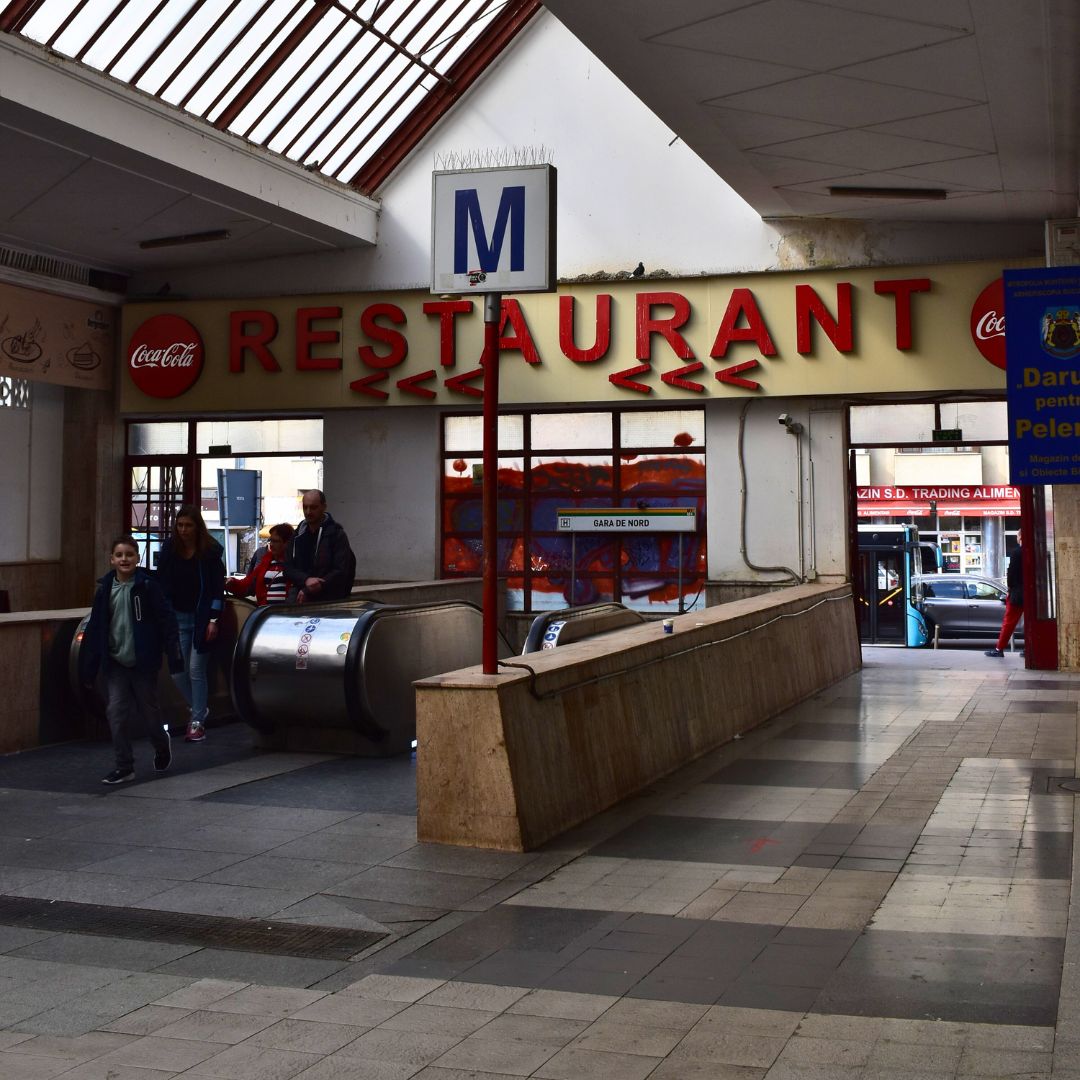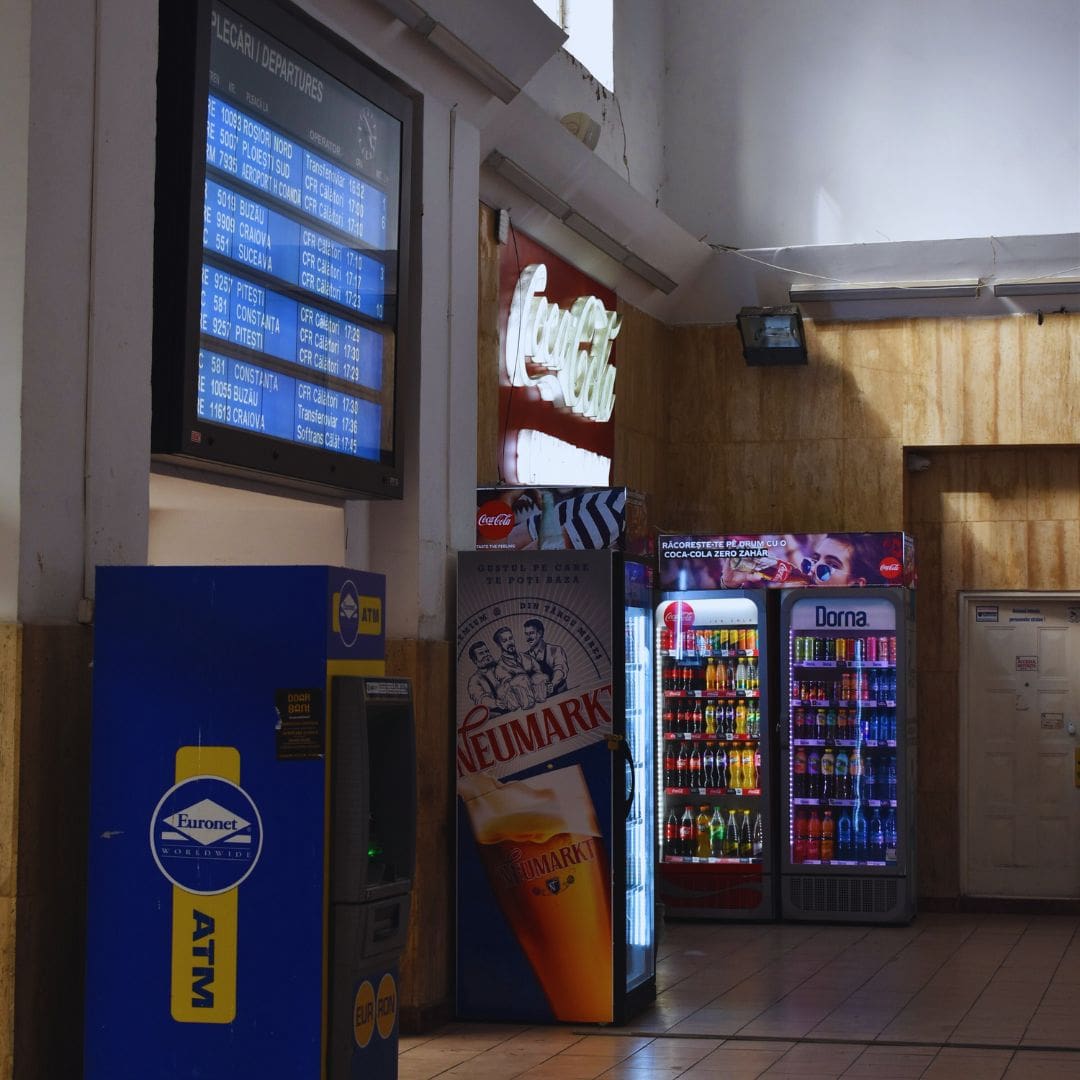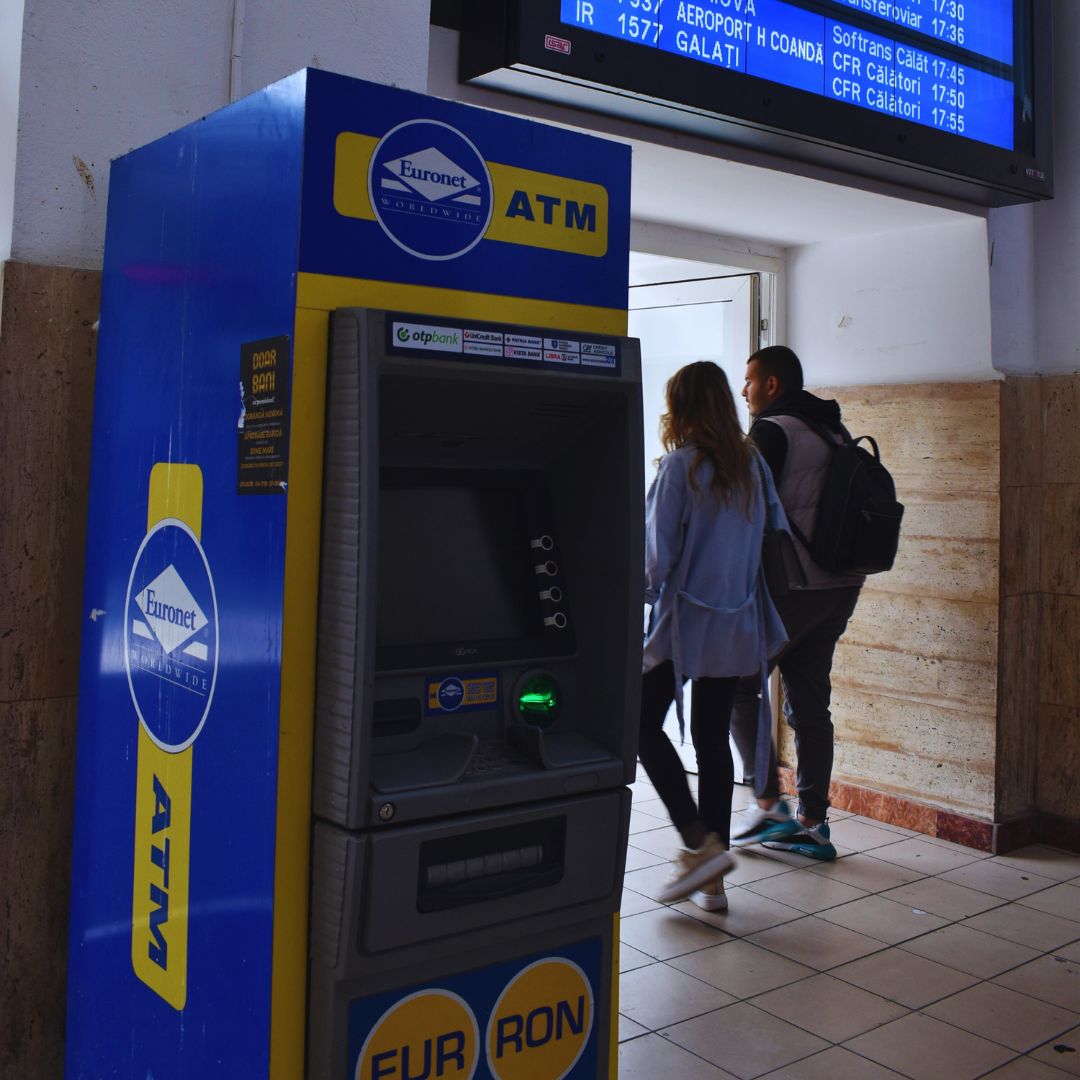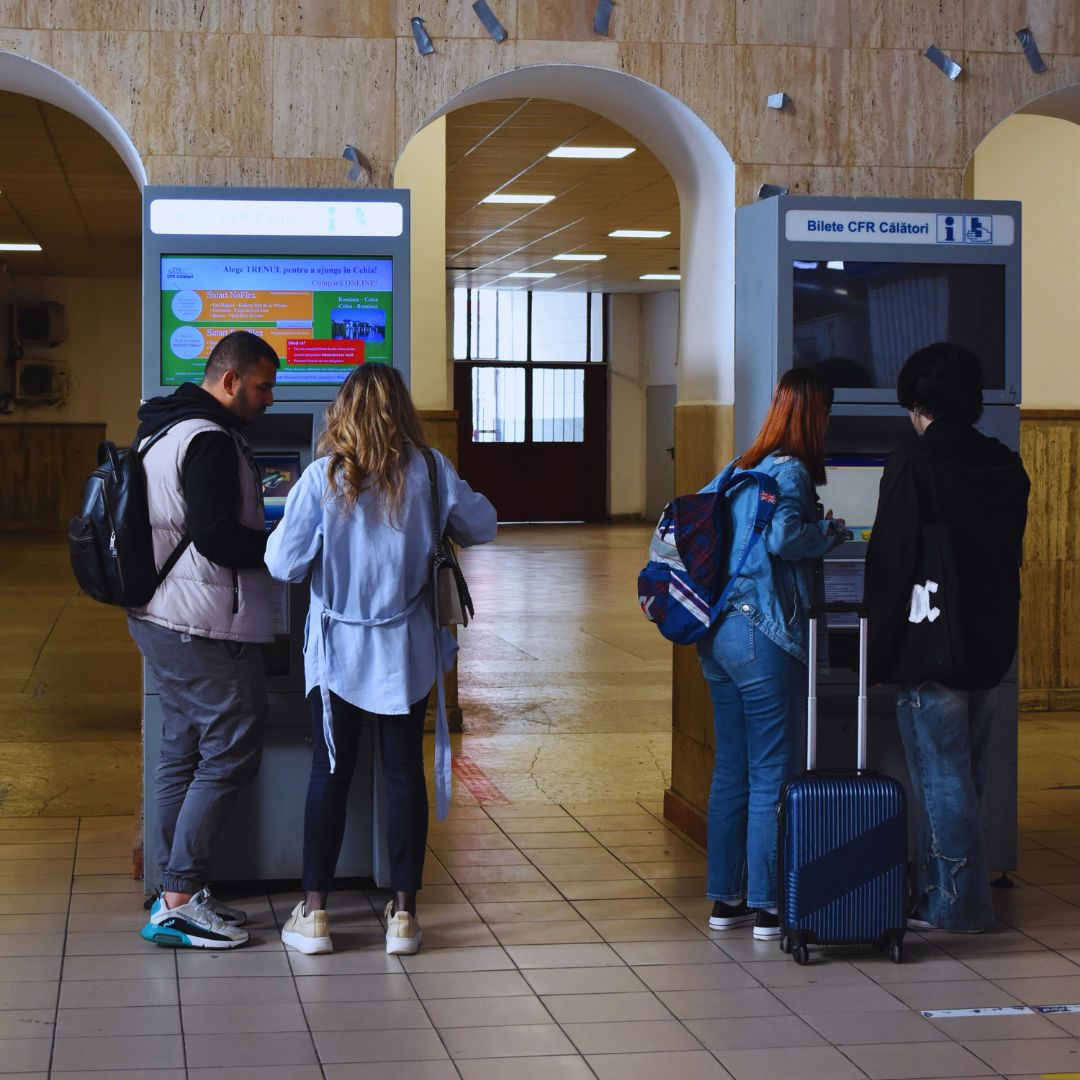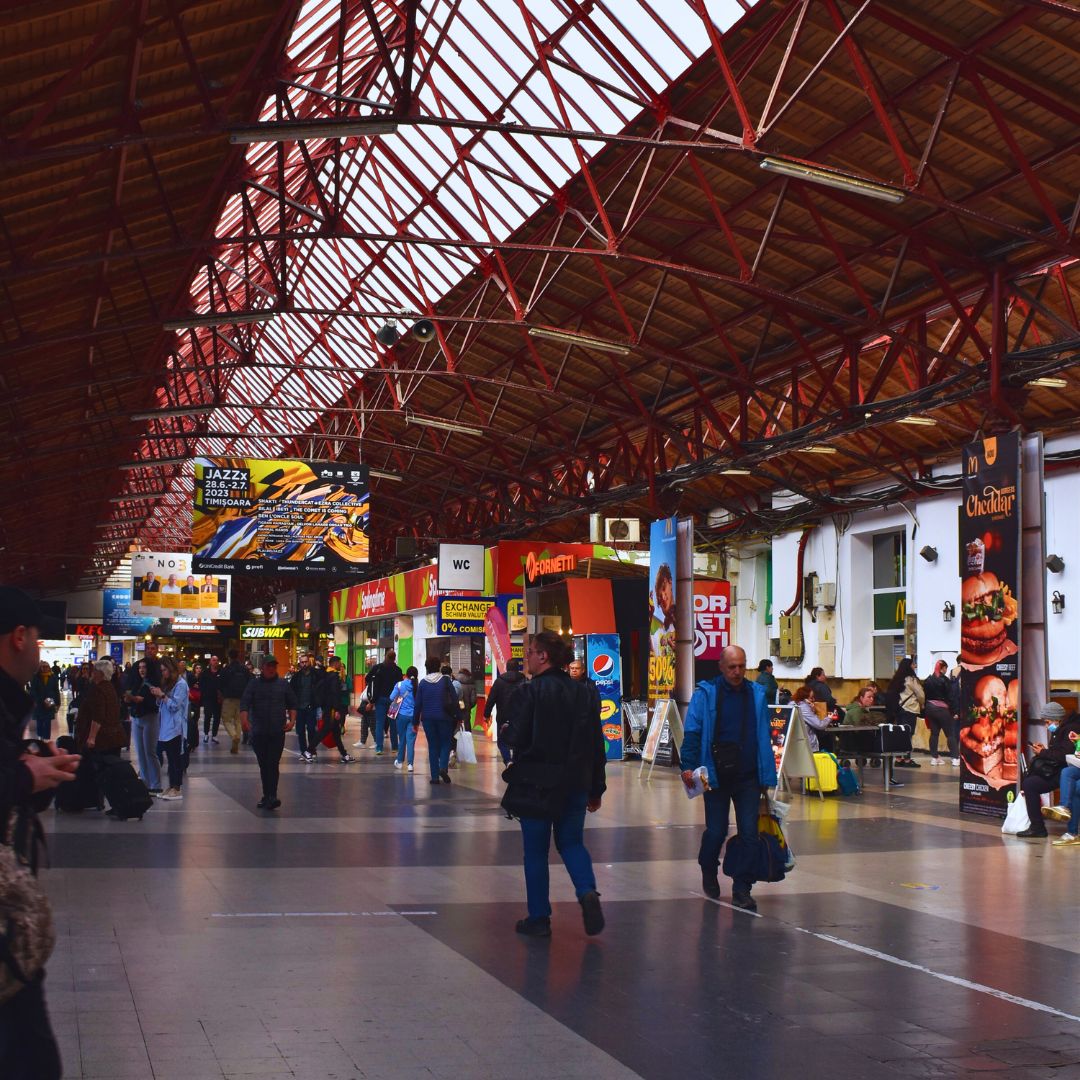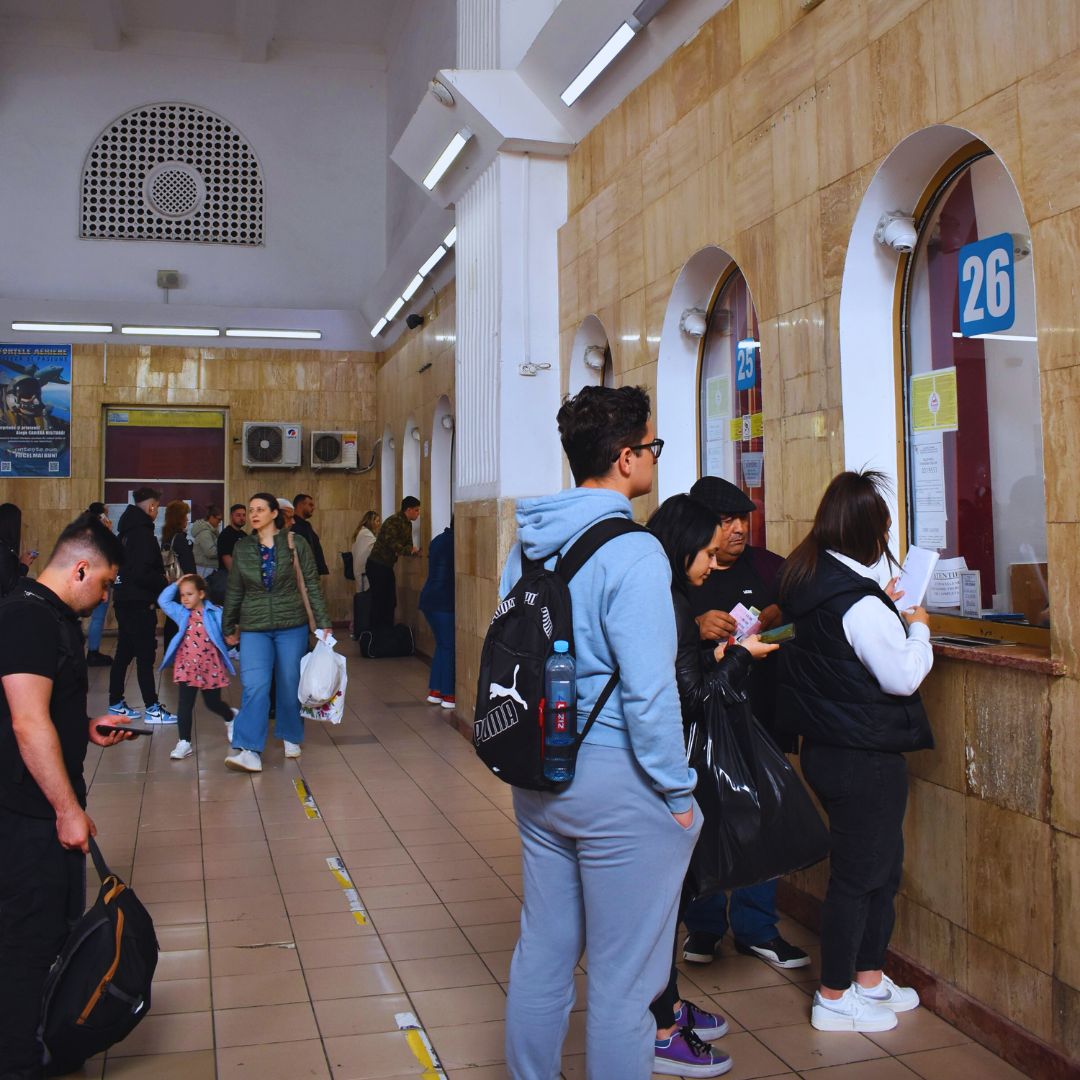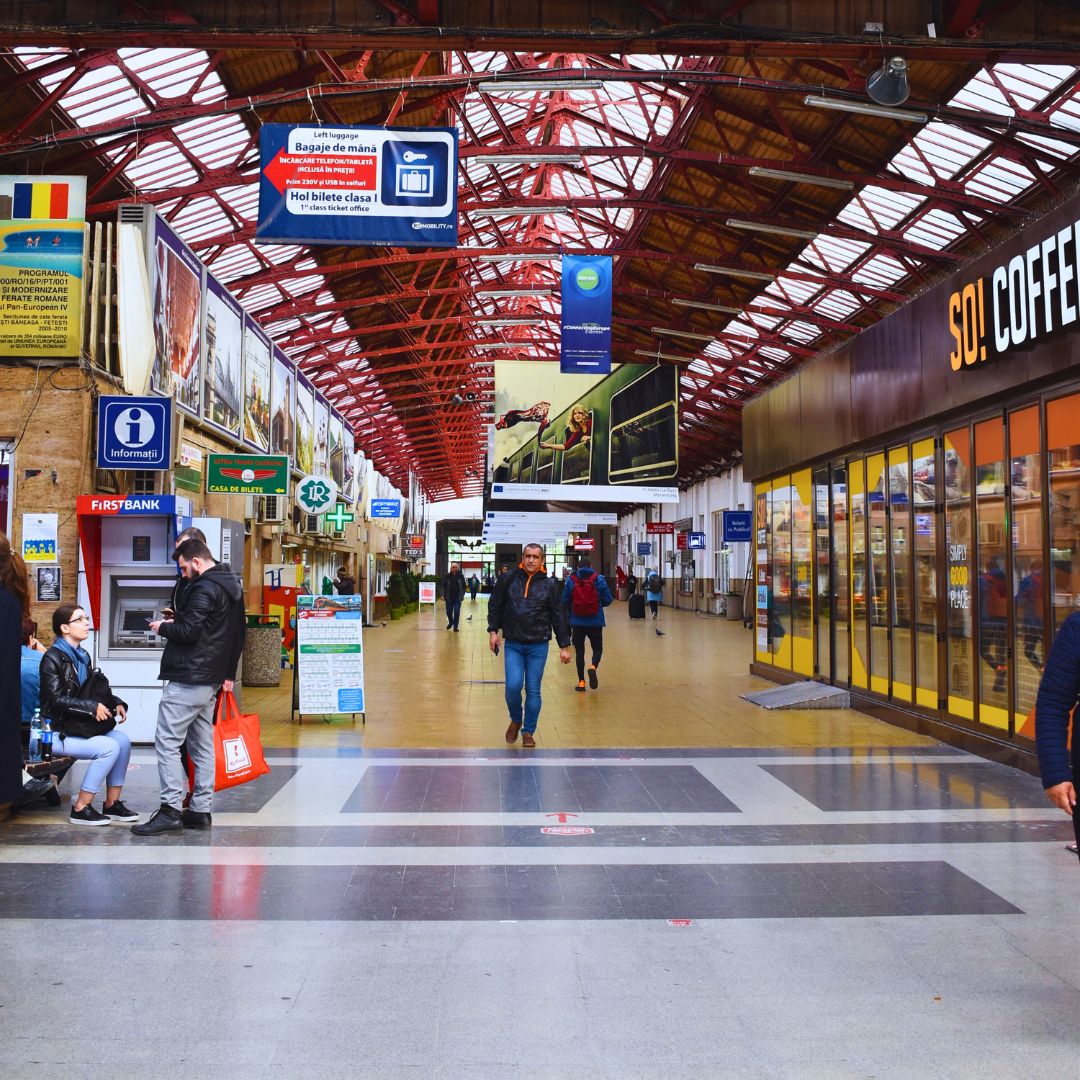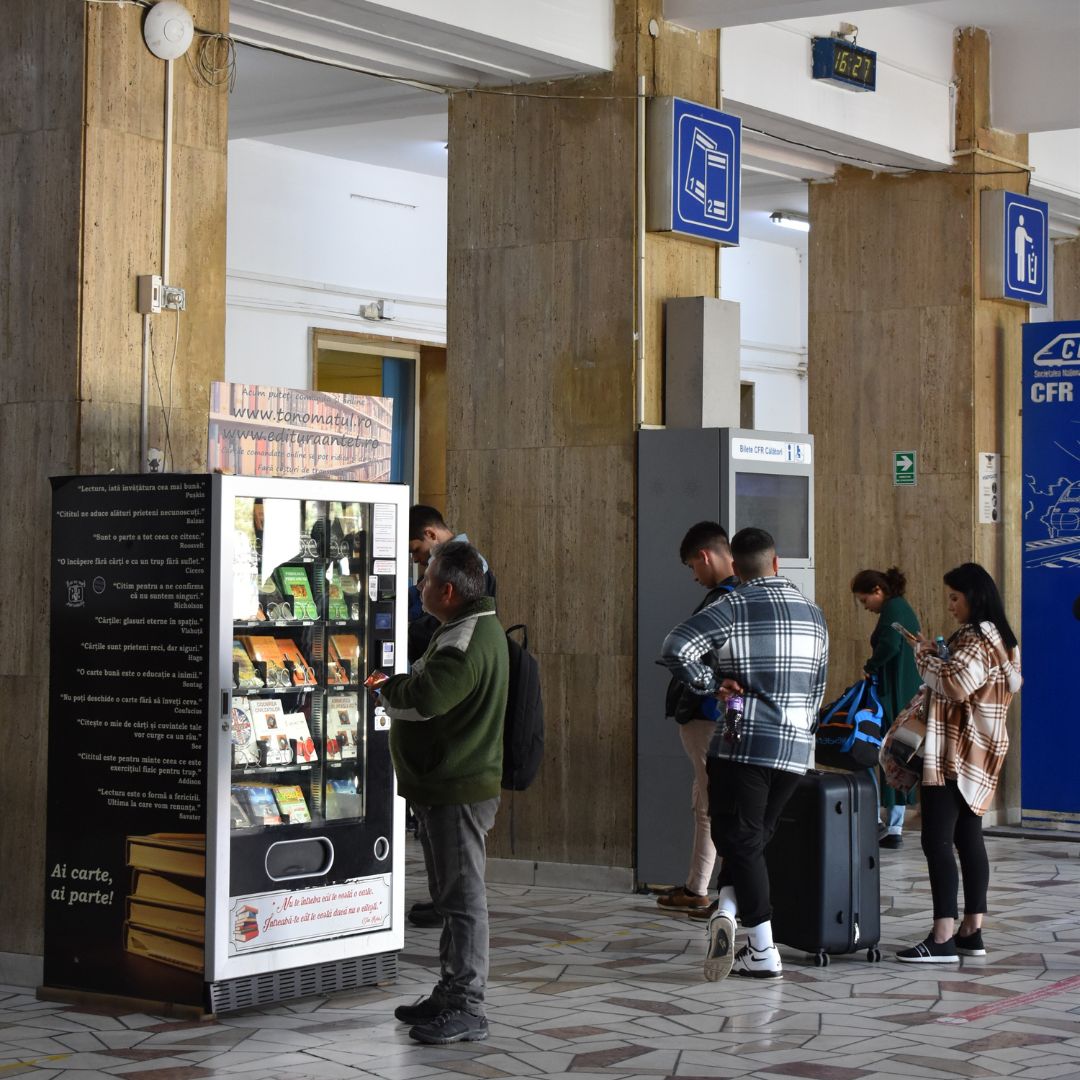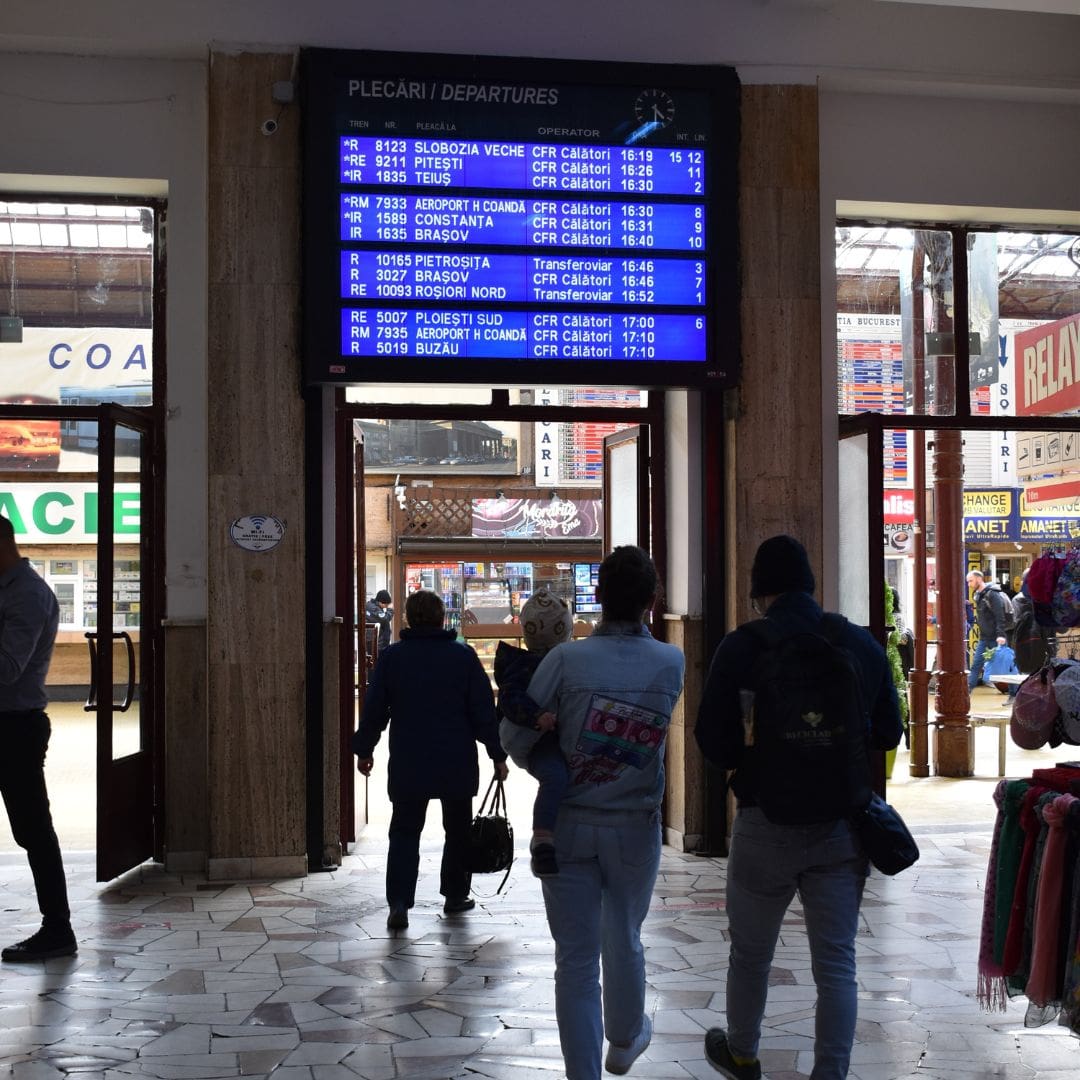The North Station is on the list of historical monuments, symbolizing Bucharest alongside the building opposite, which houses the C.F.R. - Romanian Railways Administrative Palace. The railway station has irreparably left its mark on the urban structure in the area, being an emblem at the zonal, local and national levels, constituting one of the central points of Bucharest's urban life. After almost a century and a half of existence, it endures, waiting for better days and the atmosphere of yesteryear.
This comprehensive guide delves into the historical significance, architectural beauty, and practical travel tips for visitors to the North Railway Station in Bucharest, Romania.
The North Railway Station, locally known as "Gara de Nord," is a testament to Bucharest's fascinating past. Initially constructed in 1872, the station underwent extensive renovations over the years, blending elements of Neoclassical and Art Nouveau architectural styles. Serving as a vital transportation link, the station witnessed countless travelers passing through its doors, shaping the city's history and character.
The history of Romania's main railway junction began on September 10, 1868, when the ruler Carol I laid the foundation stone of the building.
The presence of the head of state at the time at the start of construction signified the major interest of the authorities in the project. The land on which the station was built is related to the nobleman Dinicu Golescu, but also to a British diplomat and businessman who influenced the appearance of the Giulești - Grivița area and who also gives the name to a symbol bridge of Bucharest, which crosses the lines by train from the station exit. The land on which the North Railway Station is located was owned by the nobleman Dinicu Golescu, being bought by the Romanian state from Zoe Racoviță, Golescu's niece and the wife of the British diplomat and engineer.
Four years later, on September 25, 1872, Târgoviștei Station (the original name of the North Station) was inaugurated, with the opening of railway traffic on the Roman - Galați - Bucharest - Pitesti line. In the beginning, the traffic was mixed, passengers but also goods, so the station was later entirely dedicated to passenger traffic. After the War of Independence in 1877, in honor of the battles at Griviţa, Calea Târgoviştei was renamed Calea Griviței. In the following years, more precisely in 1888, the Bucharest railway station acquired the established name we all know.
Since its early years, the Northern Station has witnessed important events. In 1877, it hosted the reception of Tsar Alexander II of Russia, who came to Bucharest on an official visit. A new building was built towards the current Palat C.F.R. a year later. The station project included a U-shaped building, with two parallel bodies connected to a third body arranged perpendicularly, with architecture inspired by the Gare du Nord in Paris. Initially, the station intended to transit passengers and goods, including seven railway lines, workshops, and offices.
With its imposing facade and intricate detailing, the North Railway Station is an architectural marvel worth exploring. The grand entrance showcases towering columns, ornate moldings, and a magnificent clock, evoking a sense of grandeur and elegance. The interior boasts high ceilings and a blend of classic design elements, making it a feast for the eyes.
As Bucharest's most significant railway station, the North Railway Station offers excellent connectivity to domestic and international destinations. It serves as the gateway to various regions in Romania, including Transylvania, to cities like Brasov or Sibiu, Moldova, and the Black Sea coast, in Constanta. Moreover, the station is well-connected to major European cities, making it an important transportation hub for travellers exploring the region.
On the other hand, as mentioned, North Station links Bucharest to Otopeni International Airport. For just EUR 1, travellers arrive from Bucharest to the airport, or from the airport to Bucharest, in just 20 minutes.
More than that, while enjoying your city break in Bucharest, you can also take the same train to the airport and drop off at Mogosoaia, one of the three stations the train stops, to visit the impressive Mogosoaia Palace.
Alongside its historical significance, the North Railway Station caters to the needs of modern-day travelers. The station premises house a multitude of amenities, including shops, restaurants, cafes, and boutiques, ensuring that visitors have access to a wide range of goods and services. Whether you're looking to grab a quick bite, indulge in some retail therapy, or simply relax before your journey, the North Railway Station has you covered.
Located in the heart of Bucharest, the North Railway Station provides convenient access to several noteworthy attractions. Just a stone's throw away lies the famous Herastrau Park, a tranquil oasis boasting beautiful lakes, green spaces, and recreational activities. Additionally, the iconic Arc of Triumph, a monumental arch honoring Romania's independence, is a short distance from the station and is a must-visit landmark.
Before heading to the station, familiarize yourself with the train schedules, routes, and destinations. Check the official website or consult with local travel agencies to obtain accurate and up-to-date information. Planning ahead will help you avoid confusion and ensure you catch the right train.
Given the station's size and the volume of passengers it handles, it's advisable to arrive well in advance to ensure a smooth travel experience.
Consider purchasing your train tickets in advance to save time and secure your seat. You can buy them online through reputable ticketing websites or directly at the station's ticket counters. Having your tickets beforehand will prevent long queues and potential ticket unavailability.
The North Railway Station can get quite busy, especially during peak travel hours. Schedule your journey outside of rush hours to avoid crowded platforms and long queues if possible. Opting for mid-morning or mid-afternoon departures may provide a more relaxed travel experience.
As with any central transportation hub, you must remain vigilant and monitor your belongings. Avoid leaving valuables unattended, and be cautious of pickpockets in crowded areas. Consider using secure bags or backpacks with locks for added peace of mind.
By keeping these tips in mind, you can make your journey through Bucharest's North Railway Station a seamless and enjoyable experience, allowing you to focus on the excitement of your travels ahead.
Bucharest's North Railway Station is not just a transportation hub; it's a captivating landmark that tells the story of a city steeped in history. From its awe-inspiring architecture to its convenient connectivity, the station offers a blend of past and present, making it an integral part of any traveler's journey. So, whether you're embarking on a cross-country adventure or simply passing through, immerse yourself in the North Railway Station atmosphere.

